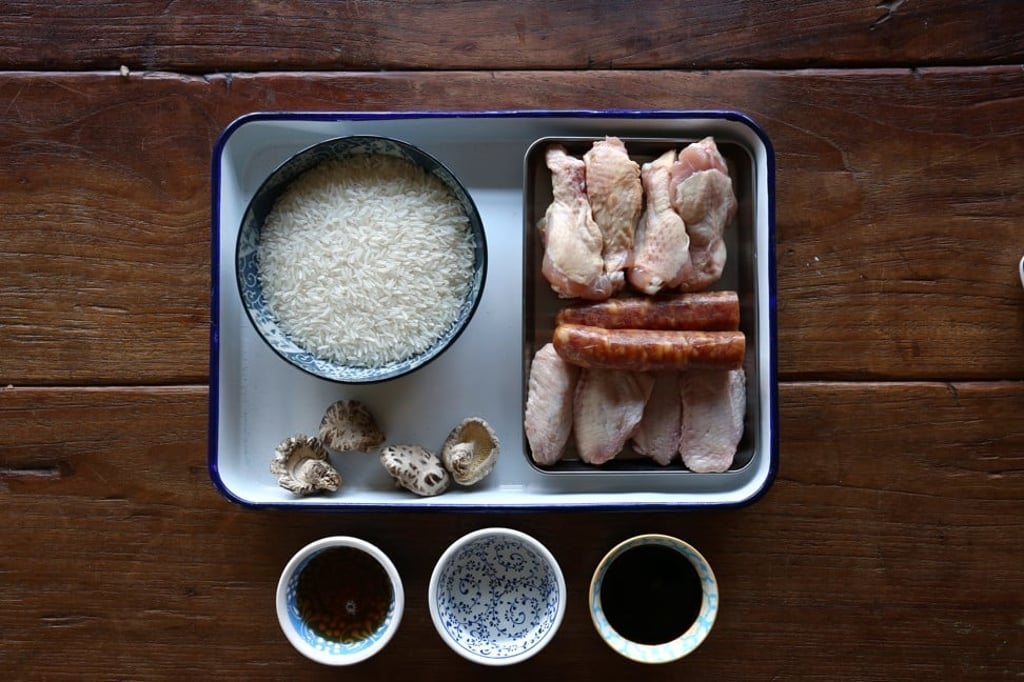How to cook clay pot rice – a classic Cantonese comfort food and winter warmer
- The secret to good bo jai fan is simple, it’s all in the amount of water you use
- Resist lifting the lid on the clay pot while it’s cooking, instead employ your senses to check that it is done

I love to watch the professionals make bo jai fan (clay pot rice) – they do it with such ease, moving the pots from one blazing hot burner (charcoal, please – it tastes better) to a slightly cooler one, then back again. It’s hard to make bo jai fan better than the shops that specialise in it because it’s something they make day after day (at least during the cooler weather). But that doesn’t mean you can’t make good bo jai fan on a gas stove in your own kitchen.
Bo jai fan with chicken wings, lap cheong and mushrooms
With bo jai fan, you need to use a little more water than you would for plain rice, because whatever ingredients you put on top need to steam until they’re cooked. You’ll be using at least four of your senses when making the dish: your sight, to see if there’s steam coming through the hole in the lid of the pot (if there’s no steam, it means there’s no more liquid, and if the rice is not ready, you’ll need to add a splash of water); your smell, to sniff out if the rice is burning – there’s a fine line between a nice brown crust (which you want) and one that’s burnt; your hearing, because if you listen carefully, you can detect the faint crackling sound of the rice browning on the bottom of the pot; and your taste, to check that the rice is done. It’s important to resist lifting the lid before everything is cooked unless it’s absolutely necessary, such as when you need to add more water.
The best restaurants have their own secret recipes for the sauce that is stirred into the bo jai fan just before it’s eaten. It’s not just soy sauce, which would be one-dimensional and far too salty. I like to mix kecap manis – a rich, thick soy sauce (use the ABC brand from Indonesia) – with other seasonings.

250 grams long-grain rice
2 dried mushrooms, about 3.5cm in diameter
4 chicken wings – drumette and middle joints only
15ml soy sauce
10ml rice wine
¼ tsp fine sea salt
½ tsp granulated sugar
A pinch of finely ground white pepper
5ml sesame oil
1 tsp cornstarch
2 lap cheong (Chinese sausage, or you can use one each of lap cheong and yuen cheong [liver sausage])
2 spring onions
For the sauce:
30ml kecap manis
15ml soy sauce
10ml rice wine
5 grams sugar
5ml sesame oil
1 Put a bowl on the scale and weigh out the rice. Leave the scale on and do not press the tare button. Rinse the rice several times until the water is almost clear, then drain it and put it back on the scale. Add more water so the total weight of rice and water is 600 grams. Put the rice and water in a clay pot with a capacity of about 1.5 litres and leave to soak for at least an hour.
